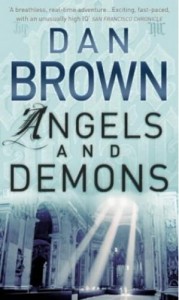I found it interesting that while in most novels the Hispanic, Asian, and African American communities are scrutinized, in The People of Paper it is the Caucasian community, more specifically the Caucasian man that is viewed in a negative light. Saturn (Salvador Plascencia), Federico De La Fe, and the lettuce pickers were all left by the women that they loved in favor of a Caucasian man, and as a result the men resented their past lovers for it. It seems to me that the men are more angered by the fact that they were left for a Caucasian man rather for having been left in the first place. Angered by Liz’s betrayal, Saturn writes to her: “You weren’t supposed to spill out of the dedication page. But then you fucked everything. Made holes in my ceiling, cracks in my ribs, my whole wardrobe to dust. All for a white boy. (117)
Similarly, Federico De La Fe and the lettuce pickers share the same sentiment. The lettuce pickers told Rita Hayworth to “go fuck her Hollywood white boys”(211), and even went as far as to call her a sellout and a whore for leaving her Mexican roots behind in exchange for a life of glamorous in Hollywood. Interestingly, however, Rita Hayworth was the daughter of a Spanish man and an Irish and English woman – Rita was by no means Mexican. On page 138, Liz confronts Plascencia for labeling her as a “sellout” in his book, after she had left him for a Caucasian man all while Plascencia, himself, had “delivered all this (the novel) into their (the readers) hands, and for what? For fourteen dollars and the vanity of your name on the book cover” (138).
This brings me to question whether Plascencia is a sellout much like he claims Rita Hayworth is. Unlike Rita Hayworth, who left Mexico to pursue a career in Hollywood, Plascencia left El Monte and the world of picking flowers for a career in writing. In contrast to the lettuce pickers, Plascencia not only received his undergraduate and graduate degrees, but he also wrote The People of Paper. Based on these accomplishments alone, if Plascencia were to be examined under the same microscope as Rita Hayworth, he would be considered a “sellout.” Perhaps, Plascencia included Rita Hayworth into the novel to allude to his own sellout.
The allusion of Rita Hayworth and Plascencia both being sellouts are one of the examples of the double standards that exist in The People of Paper. Rita is called “the sellout, the faithless one, the Malinche, the whore (137).Yet nothing is mentioned throughout the novel, besides Liz’s confrontation towards Plascencia, of Plascencia’s own success as a writer and departure from El Monte. Why was there the need to call Hayworth a sellout and whore when Plascencia is obliviously no longer living in Mexico or in El Monte picking flowers? Additionally, throughout the novel the women characters are described as promiscuous, deceiving, man-eaters, and so forth which not only alludes to the stereotypical characteristics of the female gender, but it is also another example of the double standards in the novel. Rita, Merced, Merced de Papel, and Maricela are all made out to appear as whores, but once again nothing is mentioned of the various relationships and women that Saturn and Froggy have.
The People of Paper might be considered a “post-modern” novel but it is more traditional, if not out dated, in the way that women are perceived. Rather than creating strong and independent female characters, Plascencia relies on stereotypical female traits to create his female characters. The problem that the male characters have with the Rita, Liz, and Merced is not only grounded on their exchange for a Caucasian man, but also in that the men have had a hard time accepting that the women left them, where traditionally it is the men that leave women. The men are angered by the switch of gender roles, and are also sensitive to having been left for Caucasian men whom are believed to be more educated and successful than flower pickers. Their manhood was hurt and as a result the men, especially Plascencia, fought back by calling the women derogatory terms and including them in People of Paper in a less than a flattering manner.
As a side note, personally being of Hispanic descent, Plascencia’s perception of the Hispanic community is also outdated (though I realize that the book is based on Plascencia’s own experience) because whereas in The People of Paper, Rita Hayworth is criticized for being successful, if she were in fact Mexican, today she would be celebrated much like other famous Latinas like Jennifer Lopez, Salma Hayek, Sofia Vergara, Christina Aguilera, and so on – the list is endless.




